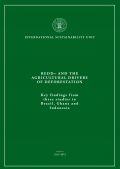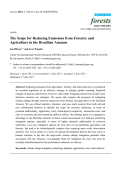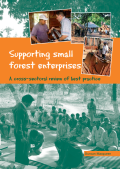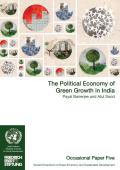
In order to ensure global food security and avert dangerous climate change, the world faces the pressing dual challenge of both protecting its remaining rainforests and enhancing food production in sustainable and resilient ways. Successfully achieving this would provide multiple co-benefits, including safeguarding the well-being and livelihoods of forests peoples; protecting the biodiversity and ecosystems provided by forests; and reducing rural poverty.

Reducing emissions from agriculture, forestry, and other land uses is considered an essential ingredient of an effective strategy to mitigate global warming. Required changes in land use and forestry, however, often imply foregoing returns from locally more attractive resource use strategies. In this paper, the authors assess and compare the prospects of mitigating climate change through emission reductions from forestry and agriculture in the Brazilian Amazon. They use official statistics, literature, and case study material from both old and new colonization frontiers to identify the scope for emission reductions, in terms of potential additionality, opportunity costs, technological complexity, transaction costs, and risks of economic and environmental spillover effects. Their findings point to a comparative advantage in the Brazilian Amazon of forest conservation-based over land-use modifying mitigation options, especially in terms of higher potential additionality in emission reductions. Low-cost mitigation options do exist also in use-modifying agriculture and forestry, but tend to be technologically complex thus requiring more costly interventionschemes.

This report reviews the growing consensus on best practice in small enterprise support, both within and outside the forest sector. It describes how a framework known as ‘market system development’ unites attempts to: strengthen enterprise associations, facilitate better provision of financial and business development services, and improve the business environment. It concludes with specific recommendations for support to SMFEs.

Rapid economic growth in India during the last two decades has accentuated the demand for energy and natural resources related to water, land and forests. Based on a review of the current policy framework in these areas and data from fieldwork in the northeastern region of India, this paper addresses two inter-related themes: (i) how emerging economies like India have dealt with the question of access to resources in response to the opposing demands of inclusive growth and social divides; and (ii) the specific case study of the 'Green Mission' and hydroelectric power (HEP) dams on the river Teesta in India’s northeastern Himalayan region.
This summary was prepared by Eldis.
